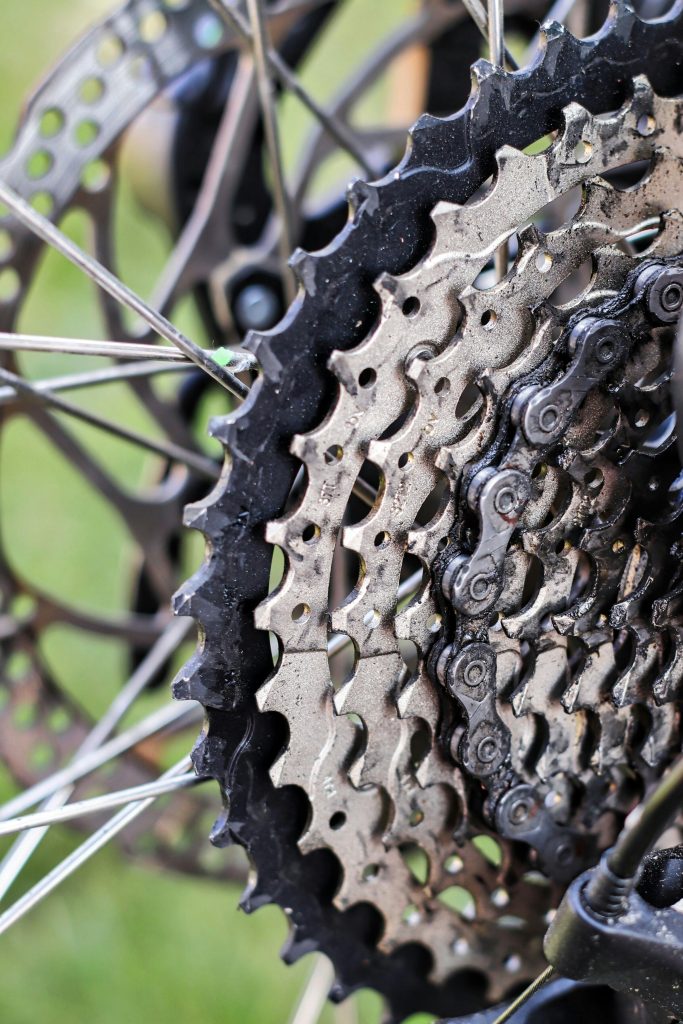In 2025, I decided to solo tour Europe by bicycle. I didn’t own a bicycle, had no idea how to mend a puncture and have a terrible sense of direction. Here are my tips on how to prepare for your first cycle touring trip.
1. Finding your bicycle

It sounds so simple but there is a mind-blowing amount of information available on choosing your perfect touring bike. You will likely be fine whatever you choose – many people have cycled extreme distances on all sorts of bikes ranging from scrap yard finds to bespoke tourers. I read a fantastic blog by a man who cycled 2,000km on a bike from AliExpress.
If you need a new bike, visiting your local bike shop is much easier than buying online and allows you to test ride before buying. In addition, there is usually the opportunity to make modifications as the bicycle is assembled. I opted for a bigger cassette to help on the uphill climbs and swapped the stock tyres for some sturdier ones.
I’m no cycling guru but here is a summary of what I learned. The key attributes of a good tourer are a sturdy steel or heat treated aluminium frame to provide a balance between strength and weight. Go for wide, puncture resistant tyres such as Schwalbe Marathon Plus and Vittoria Randonneur for stability and traction. A wide gear range will handle different terrains from flat roads to those pesky hills. Choosing a bike with well known and readily available components such as Shimano or Shram will make it easier if you need to source replacements whilst touring abroad.
When it comes to attaching pannier racks and water bottles, mounting points are vital. Consider the positioning and number of water bottle points especially if travelling in hotter climates. When it comes to choosing a saddle, comfort is so important for an enjoyable cycling tour. A wider saddle with a cutout or relief channel can help alleviate pressure. Leather saddles are a popular if more expensive choice for cycle touring. They mould to the shape of your body over time, providing a comfortable seat once broken in.
2. Bike Maintenance
If you struggle to tell your cassette from your derailleur, many bike shops run regular evening and weekend bike maintenance courses. Some are pitched at the complete beginner wanting to learn simple repairs such as fixing a puncture whilst others delve deeper into the workings of the bike. For any Bristolian readers, I can recommend Bristol Bike Project’s Bicycle Basics course where you bring your own bike to work on during the session. If a group setting isn’t for you, many of the same bike shops offer personal tuition. Getting a full bike service ahead of your trip should also help alleviate any mechanical niggles.
3. Training for your cycle touring trip
Clearly the amount of pre trip training you do will depend on underlying fitness levels, time available and your appetite for ‘winging it’. My aim was to develop a decent level of base fitness, feel comfortable on the bike and resolve any set up issues before heading off. Despite the cooler springtime temperatures in Northern Europe, I planned my route to begin in the Netherlands, aiming to build fitness as I cycled on the flat.
As a fair–weather occasional cyclist working full time, most of my training comprised spin classes in a sweaty studio. Enlisting the support of my no-nonsense spin instructor encouraged me to show up when the sofa and bad TV appealed more. Once I had my new wheels, I ventured outside. I gradually increased the distance and filled my panniers to grow accustomed to carrying weight.
4. Planning your trip
Whilst I love a good itinerary, one of the amazing things about cycle touring is the freedom it provides. No more so than in Europe with incredible sites and cities connected via the EuroVelo network of cycle paths. Wanting to embrace the flexibility, I mapped out a rough itinerary with the help of the EuroVelo route planner. My plan was to aim for an average daily cycling distance of c60km, allowing plenty of time for sight-seeing. I factored in at least one rest day per week, aiming to spend it exploring and eating.
When it comes to accommodation, think about what works for you. Many hardy souls pack a tent and sleeping bag into their panniers and camp along the route. I opted for a mix of hostels, hotels and Airbnb’s, booking accommodation for the first few nights before setting off and then reserving the remainder on the way.
5. Cover your cycle touring trip
Don’t forget your travel insurance and make sure you have the right cover when planning for your first cycle touring trip. Many travel insurers consider cycle touring to be an extreme sport and either won’t cover it in their policies or will only cover your for cycling if it is an incidental activity to your trip and not the sole purpose e.g. hiring a bike for a day.
Even if they do cover cycle touring, most insurers won’t provide personal liability cover for this activity. This covers you if you are liable to pay damages due to accidentally injuring someone or causing loss or damage to their property.
Finding the right travel insurance can be a painstaking process but Cover My Adventure has done the leg work for you.
✅View our list of insurance policies covering cycle touring trips.
✅ For tips on what to pack for your first cycling tour, check out our packing list.
